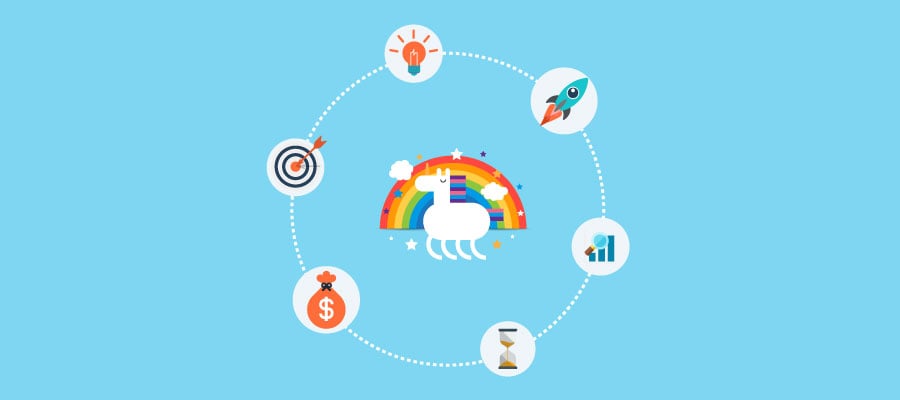You've ticked all the boxes on your productivity checklist, yet you’re dragging behind deadlines. Sure, there can be external factors like lack of stakeholder engagement, sudden scope changes, poor risk management, and more. But, what you don’t see is all that time you were working with a flawed checklist — failure was inevitable.
We all like to believe we have a pretty solid grip on what makes us productive. The truth is, our beliefs on productivity are formed by accepting ideas at face value. While some of them are facts, there are others which need to be put under the microscope.
A quick glance of your checklist can reveal a lot about your productivity beliefs. You’re only going to add those productivity ideas to your checklist that you believe are true: all the facts and misconceptions you hold about productivity will end up on that checklist. Even if you miraculously achieve your deadlines, the lingering half-truths will never let you reach your full potential.
To tap into that hidden productivity, here are five myths you should stop chasing right now.

Image by rawpixel, sourced from Unsplash
Myth 1 - Start out with easy tasks
It’s Monday, you start the day off by going through emails, making phone calls, scheduling meetings, and wrapping up some of the other menial tasks. By the end of the day, you feel you conquered the world. But, when you tally the monthly output, you’re shocked to find a laundry list of pending tasks.
It’s a neat trick our brain plays to make us think that we are getting a lot of work done. A classic example of mistaking movement with progress. Clerical tasks help get things moving, but real results come from finishing up the difficult tasks.
Instead: Work on the tough ones first. When you get high-demanding tasks out of the way, dealing with the menial work becomes easy as a pie.
Take a piece of paper and jot down a list: beginning with tasks that require the most time and effort to the ones that can be done in a jiffy. Or, make things easy by using Workflowmax to manage job assignments.
 Image by Ahsan Avi, sourced from Unsplash
Image by Ahsan Avi, sourced from Unsplash
Myth 2 - You have to do it ASAP
Finishing up work in a rush isn't a great route. The output tends to be haphazard, leaving you with countless sessions of rework.
Instead: Adopt strategic procrastination. Let’s be honest, you are going to procrastinate at some point, rather than fighting it, learn to manage it.
Train yourself to procrastinate with intent. Identify the problems and note down the desired results. Finally, let the mind wander, allowing the subconscious to fill in the blanks and come up with solutions. It’s no surprise procrastination has often been associated with creativity and critical thinking.
Image by Farzad Nazifi, sourced from Unsplash
Myth 3 - Multiple screens are a distraction
This is a tricky one. There's a divided opinion on whether multiple screens make us productive or do they create distractions? The answer depends on how you use it.
It’s a distraction if a writer switches attention between different sheets across multiple screens. At the same time, data-heavy and programming tasks get done faster due to the extra screen real estate.
The nature of your tasks determines if multiple screens are needed or not. That said, dismissing them completely can hold you back from achieving your full potential.
Instead: See if you need to move quickly between two separate sets of information. If yes, multiple screens can help you get more work done in less time. In fact, multiple monitors have shown 20% -30% productivity increase according to New York Time’s report.
 Image by Anders Jilden, sourced from Unsplash
Image by Anders Jilden, sourced from Unsplash
Myth 4 - Early Riser = more productive
“The early bird gets the worm”
It’s phrases like these that make us believe the only way to be productive is to be a morning person. But we aren’t birds, we’re humans; some of us are morning people while others are night owls.
Pushing yourself to wake up early in the morning even though you know you are a night owl, won’t do you any good. You’ll struggle to get work done because your energy levels are high only after the sun sets down.
Likewise, morning people who cut short precious sleep time will see productivity slumps throughout the day.
Instead: Try to exit the bed as quickly as possible. Follow Mel Robbins’ five-second rule: no matter what time you wake up, get out of the bed within five seconds and blast off. Irrespective of when you wake up, ensure you get a good night sleep.
It helps to focus on the job at hand and improves the ability to recall important information. Both combined enables you take better decisions. Image by Toa Heftiba, sourced from Unsplash
Image by Toa Heftiba, sourced from Unsplash
Myth 5 - Stress is an obstacle
People believe productivity is the reward for overcoming stress. But, stress is an inevitable part of life, whether it’s your job or personal life. Anything you do will come with a certain level of stress — overcoming ‘it’ is a lie we tell ourselves.
But, what if I told you stress can actually make you more productive?
When our brains feel stressed they release a chemical called Noradrenaline. It increases arousal, alertness, memory power, focus; while increasing restlessness and anxiety.
A study shows there’s a sweet spot where if you have the right amount of Noradrenaline, you can tune your mind the way you want. This won’t happen while we see stress as an obstacle.
Instead: View stress as a productivity enhancer. Train your mind to turn high-pressure situations as an opportunity to either ace or learn. For instance, turn anxiety into excitement before a big presentation.
Here are a few ways to train your mind to handle uncomfortable situations like a boss:
- Scrutinize your assumptions. Acknowledge your bias to know exactly what you are getting into. It avoids the anxiety that comes with entering into the unknown.
- Repeat positive affirmations. Keep telling yourself ‘I can handle whatever comes my way’ throughout the day. Eventually, the notion will become part of your subconscious.
- Do puzzles. It stretches your brain to think differently. It toughens your mind to deal creatively with complex situations. Try the crossword in your daily paper, or if that’s too analogue for you, use Lumosity.com or another online brain trainer.
Winding up
Quantifying your productivity is the best litmus test to find out if you’re following myths or facts. Keep track of your productivity and find out what’s causing those productivity drops.
Remember, productivity doesn’t come out of accidents, it’s a result of commitment, making the right moves, and good planning.
***
Want to find out how Hiver can help your business? Contact a Niraj on Twitter here @nirajr or find out more.





.jpg?width=60&height=60&name=Niraj_Headshot%20(1).jpg)
